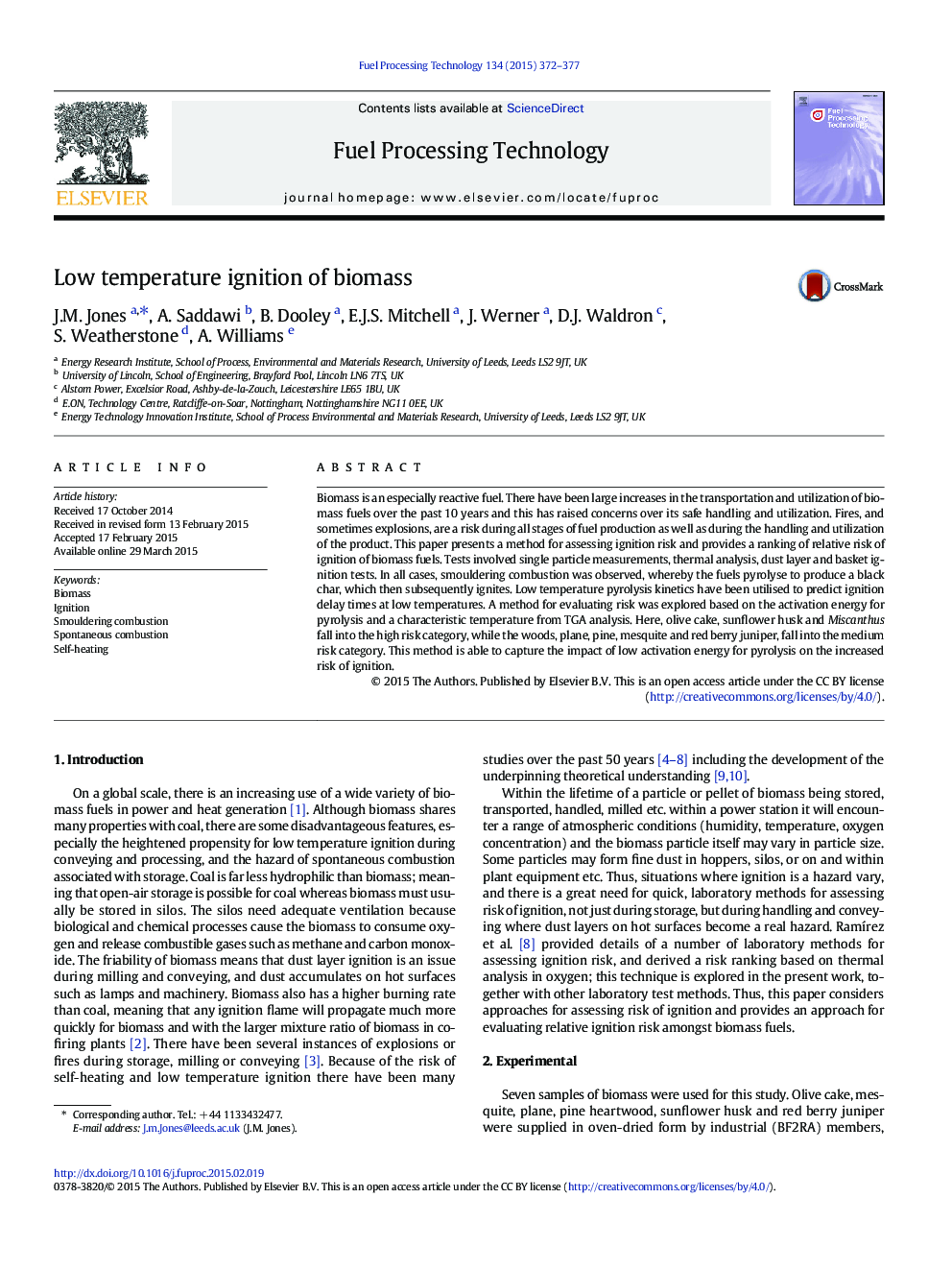| Article ID | Journal | Published Year | Pages | File Type |
|---|---|---|---|---|
| 6657083 | Fuel Processing Technology | 2015 | 6 Pages |
Abstract
Biomass is an especially reactive fuel. There have been large increases in the transportation and utilization of biomass fuels over the past 10Â years and this has raised concerns over its safe handling and utilization. Fires, and sometimes explosions, are a risk during all stages of fuel production as well as during the handling and utilization of the product. This paper presents a method for assessing ignition risk and provides a ranking of relative risk of ignition of biomass fuels. Tests involved single particle measurements, thermal analysis, dust layer and basket ignition tests. In all cases, smouldering combustion was observed, whereby the fuels pyrolyse to produce a black char, which then subsequently ignites. Low temperature pyrolysis kinetics have been utilised to predict ignition delay times at low temperatures. A method for evaluating risk was explored based on the activation energy for pyrolysis and a characteristic temperature from TGA analysis. Here, olive cake, sunflower husk and Miscanthus fall into the high risk category, while the woods, plane, pine, mesquite and red berry juniper, fall into the medium risk category. This method is able to capture the impact of low activation energy for pyrolysis on the increased risk of ignition.
Related Topics
Physical Sciences and Engineering
Chemical Engineering
Chemical Engineering (General)
Authors
J.M. Jones, A. Saddawi, B. Dooley, E.J.S. Mitchell, J. Werner, D.J. Waldron, S. Weatherstone, A. Williams,
